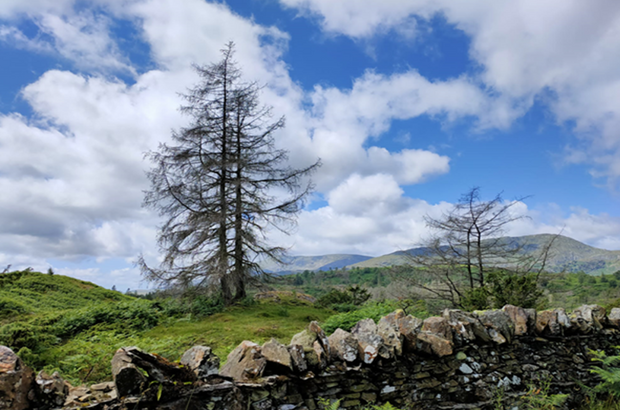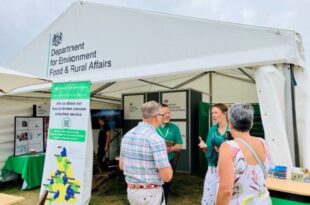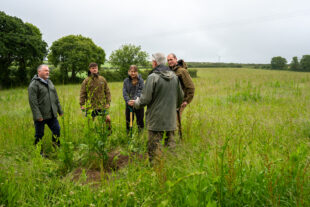
The Tree Health Pilot is a 3-year scheme which tests different ways of slowing the spread of tree pests and diseases as well as building the resilience of trees across England.
The pilot, which began in August 2021, will run until 2024. What we learn from the pilot will inform the design of the future Tree Health Scheme. This will be rolled out through our environmental land management schemes when the pilot ends.
Using what we’ve learned so far from testing and feedback, we’ve made a number of improvements to better support land managers to deal with tree pests and diseases.
In this post, I’d like to share a short summary of the pilot and the improvements we’ve made to the scheme.
It’s not too late for you to take part, so I’ll also include details of how you can get involved.
Recap
Funding from the pilot can go towards a range of measures including:
- felling diseased trees and necessary infrastructure improvements
- restocking with new trees and capital items to assist this
- maintenance of newly planted trees
- biosecurity items
The Tree Health Pilot guidance on GOV.UK sets out the aims of the pilot in detail.
Our improvements
Through our monitoring and evaluation work, we've gathered feedback from pilot participants over the past year.
We conducted workshops, interviews and surveys with farmers, land managers and stakeholders, as well as our delivery teams, to examine the offer in depth. Their experiences shaped our support.
The insight we gained directly feeds into our improvements, which I'll go into below.
The payments process
We removed the need for land managers to acquire multiple quotes for felling operations during the application stage.
Instead, grant holders will be able to claim for costs incurred, up to a maximum cap using market rates and based on the overall net cost of the work carried out.
We recognised gathering multiple quotes proved difficult. This improvement will mean land managers are paid quicker and, crucially, swift action can be taken to reduce the spread of tree pests and diseases across the country.
New advice package
Recognising that some farmers and land managers may not be used to dealing with tree health issues, we have bolstered our support.
The pilot now offers a new advice package which is available to land managers issued with Statutory Plant Health Notices within the pilot’s target areas.
It aims to build land managers knowledge and awareness of tree health issues, biosecurity and woodland management.
By contributing to the costs of agent advice and training, this advice package will improve land managers ability to identify and deal with tree health issues, including responding to Statutory Plant Health Notices.
In full, the package includes funding for a forestry/land agent consultation to assist land managers in creating a biosecurity management plan, and funding for a personal biosecurity kit, signage and training.
Improved guidance
A new scheme manual has been published with improved guidance. You can find this on GOV.UK.
The application form and processes have been simplified to reduce the administrative demand on applicants.
Increase in standard capital cost items
Standard capital cost items have increased, in line with new rate changes to the Countryside Stewardship and the England Woodland Creation Offer schemes.
This includes higher rates for deer fencing and tree shelters. Maintenance rates to help ensure that newly planted trees grow successfully, have increased from £300 to £350 per hectare, per year.
The fee paid to the lead facilitators of group applications is also increasing to £24 per hour to help cover coordination costs.
For more information on the updated scheme, including how the new payments process works and the maximum cap is calculated take a look at the Tree Health Pilot guidance.
Taking part
The pilot is still open for applications, so do consider taking part.
The Tree Health Pilot guidance covers:
If you think you might be eligible, we’d love to hear from you.




2 comments
Comment by Deborah Catherine Smith posted on
Can you explain the actual biologica and biodiversity outcomes so far, of this approach to ash felling? Are there other country's approaches to compare with? Concerned that your explanation is more about making the scheme work more easily for farmers, not whether it is actually effective in dealing with Ash dieback or building back tree numbers and tree biodiversity
Comment by The Team posted on
Hello Deborah,
Thanks for your question. The new Tree Health scheme is designed to support farmers and other land managers as they deal with tree pests and diseases. This support has been designed to encourage as much restocking as possible where trees have been removed due to ash dieback, with a wide array of support for capital items to help restocking in both woodlands and for trees outside of woodland. Our aim is to ensure as many trees as possible are planted to replace those lost to pests and diseases, so we can mitigate as much biodiversity loss as possible.
As we mentioned, our work to develop the ash dieback grant is still in the pilot phase, and the aim of this post was to give farmers an update on our progress.
In terms of the guidance for managing ash dieback, this is set out by the Forestry Commission on GOV.UK: https://www.gov.uk/guidance/managing-ash-dieback-in-england
Included in this guidance, you'll see the Arboricultural Association has provided a practical guide which includes the research and evidence underpinning it: https://www.trees.org.uk/Help-Advice/Public/Ash-Dieback-%E2%80%93-Practice-Guidance
We hope this helps.
Best wishes,
The Team